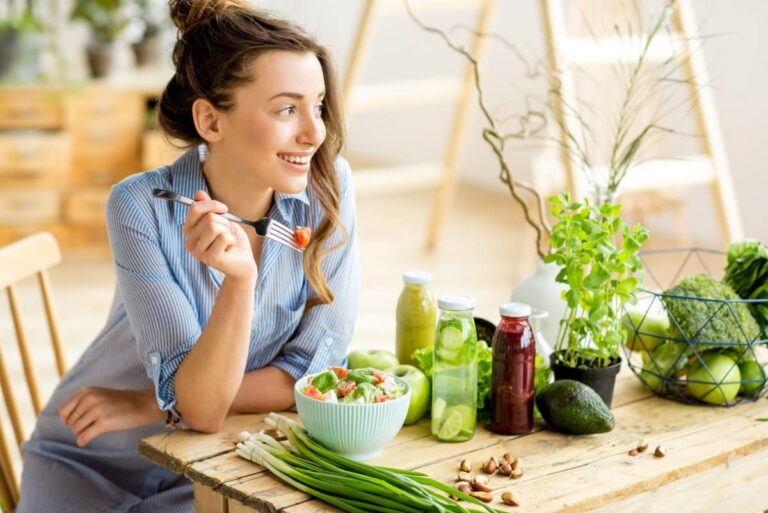Nutrient-Deprived: 20 Grocery Items Full of Chemicals
Navigating the grocery store aisles can sometimes feel like walking through a chemistry lab. From neon-colored sodas to fruit snacks that have never seen real fruit, many products contain more artificial additives than actual nutrients. These items might be convenient and addictive, but have you ever stopped to think about what’s really inside them?
1. Processed Cheese Slices

These cheese slices melt perfectly but at a cost: they’re packed with phosphates, emulsifiers, and artificial colors. Often, these components are banned in other countries due to health concerns.
2. Soda

Loaded with high fructose corn syrup, artificial colors, and phosphoric acid, soda is essentially a bubbly brew of chemicals. Some of its dyes have been banned in countries like Norway and Austria.
3. Fruit Snacks

Marketed to kids with pictures of fruits, these snacks instead offer a dose of artificial flavors and gelatin. The vibrant colors come from dyes questioned by health advocates worldwide.
4. Non-Dairy Whipped Toppings

These toppings are a mix of hydrogenated vegetable oils, high fructose corn syrup, and synthetic emulsifiers—far from the cream they mimic.
5. Microwave Popcorn

The butter flavor in microwave popcorn often comes from diacetyl, a chemical linked to respiratory issues. The bags themselves may contain PFOA, a substance linked to several health problems.
6. Instant Noodles

A college dorm staple, instant noodles contain tertiary-butylhydroquinone (TBHQ), a preservative derived from petroleum, alongside MSG and excessive sodium.
7. Margarine

Once touted as a healthier alternative to butter, many margarines are actually trans fat havens, made with hydrogenated oils and artificial colors.
8. Diet Ice Cream

Low-fat and no-sugar options often replace these elements with artificial sweeteners like aspartame and acesulfame potassium, which have been scrutinized for potential health risks.
9. Store-Bought Salad Dressings

These dressings often hide a plethora of preservatives, artificial colors, and flavor enhancers behind their creamy or tangy exteriors.
10. Flavored Yogurts

While yogurt can be a good source of probiotics, many flavored varieties are laden with artificial flavors and excessive sugar or artificial sweeteners.
11. Breakfast Cereals

Many brightly colored cereals targeted at children contain artificial dyes and flavors, along with a high sugar content.
12. Energy Drinks

Packed with caffeine, sugar, and other stimulants like taurine and guarana, energy drinks can be a chemical cocktail posing serious health risks.
13. Packaged Cookies

Beyond sugar and flour, packaged cookies often contain artificial flavors, preservatives, and trans fats to prolong shelf life.
14. Canned Soups

Many canned soups are high in sodium and contain MSG and other chemical additives to enhance flavor and longevity.
15. Bottled Smoothies

Despite their healthy image, many bottled smoothies are high in sugar and use preservatives and colorants to enhance appearance and taste.
16. Vegetable Oils

Some common cooking oils undergo extensive chemical processing with solvents like hexane, far removed from their natural sources.
17. Artificial Sweeteners

Products like sucralose and aspartame offer the allure of zero calories but come with a list of potential health concerns.
18. Processed Meats

From hot dogs to deli slices, processed meats often contain nitrates and phosphates as preservatives, linked to various health issues.
19. Artificial Creamers

Non-dairy creamers use a host of synthetic ingredients to mimic the creaminess and flavor of real milk or cream.
20. Boxed Macaroni and Cheese

The bright orange color of many boxed mac and cheese products comes from artificial dyes, which some studies suggest may affect children’s behavior.
21. Frozen Dinners

These convenient meals are typically loaded with sodium and preservatives to maintain their long freezer shelf life.
Think Before You Eat

While it’s tempting to choose convenience, it’s worth taking a moment to consider what’s really in your food. Opting for whole, less processed options can make a big difference in your health and well-being. Next time you’re shopping, take a closer look at the labels—your body will thank you.
Not All Tea Is Good for You: List of Teas to Avoid and to Stick To

Not all teas are healthy and some might actually harm your health with poor ingredients. But how can you tell the good from the bad? This guide aims to help you make informed choices without turning you into a tea expert overnight. Not All Tea Is Good for You: List of Teas to Avoid and to Stick To
America’s Spiritual Revolution: Turning Away from Christianity to Embrace Alternatives

As church attendance declines, Americans are exploring diverse spiritual paths, from stargazing druids to unconventional deities like Wi-Fi gods and extraterrestrials. Explore the quirky and sometimes controversial new religions capturing attention as people seek meaning beyond traditional Christianity. America’s Spiritual Revolution: Turning Away from Christianity to Embrace Alternatives
25 Must-Try Global Delicacies

From Bangkok’s bustling streets to Parisian cafes, every corner of the world offers something special for your taste buds. And you don’t have to travel far; even in the USA, you can find a world of flavors. Here are 25 global delicacies every foodie should try, including some local favorites! 25 Must-Try Global Delicacies
16 Affectionate Gestures to Keep the Romance Alive

Sustaining romance in a relationship needs deliberate actions and research-backed gestures to foster intimacy. Here are 16 evidence-based romantic gestures, with steps to integrate them into your relationship and revive the spark. 16 Affectionate Gestures to Keep the Romance Alive
21 Top Christian Attractions to Explore in the U.S.

The U.S. is rich in spiritual destinations, offering awe-inspiring sites for both believers and curious travelers. Explore the 21 most popular Christian attractions across the country, where architecture, history, and faith converge. 21 Top Christian Attractions to Explore in the U.S.
The post Nutrient-Deprived: 20 Grocery Items Full of Chemicals first appeared on Hello Positive Mindset.
Featured Image Credit: Shutterstock / Tyler Olson.
For transparency, this content was partly developed with AI assistance and carefully curated by an experienced editor to be informative and ensure accuracy.






